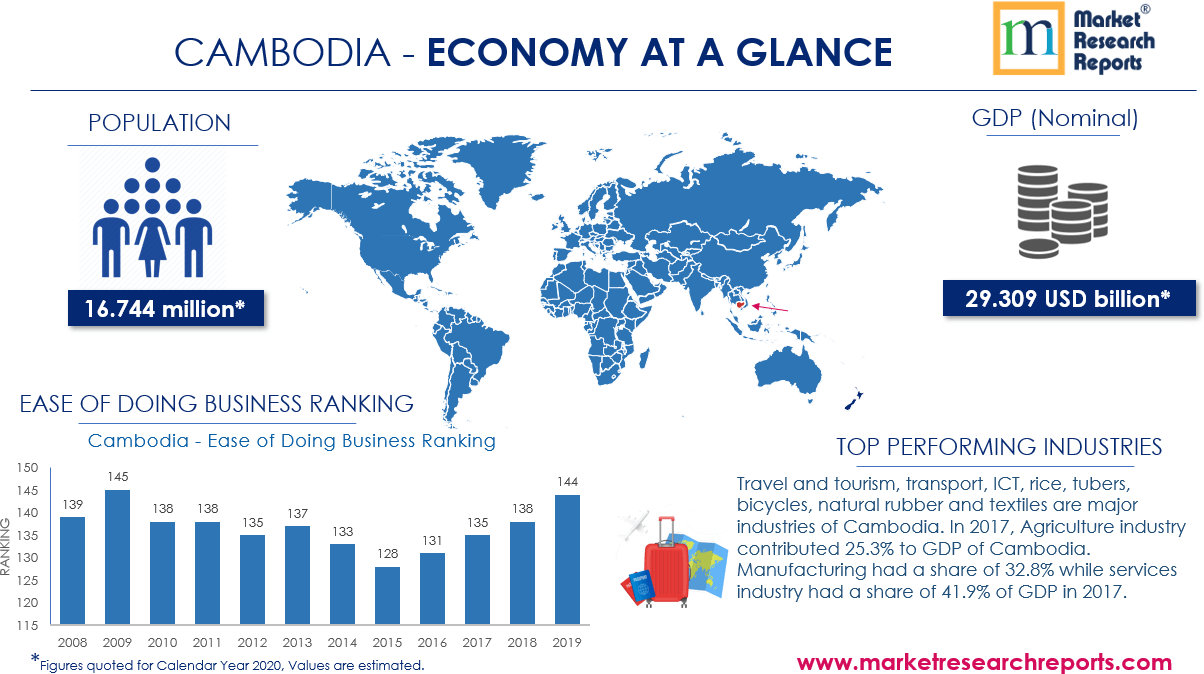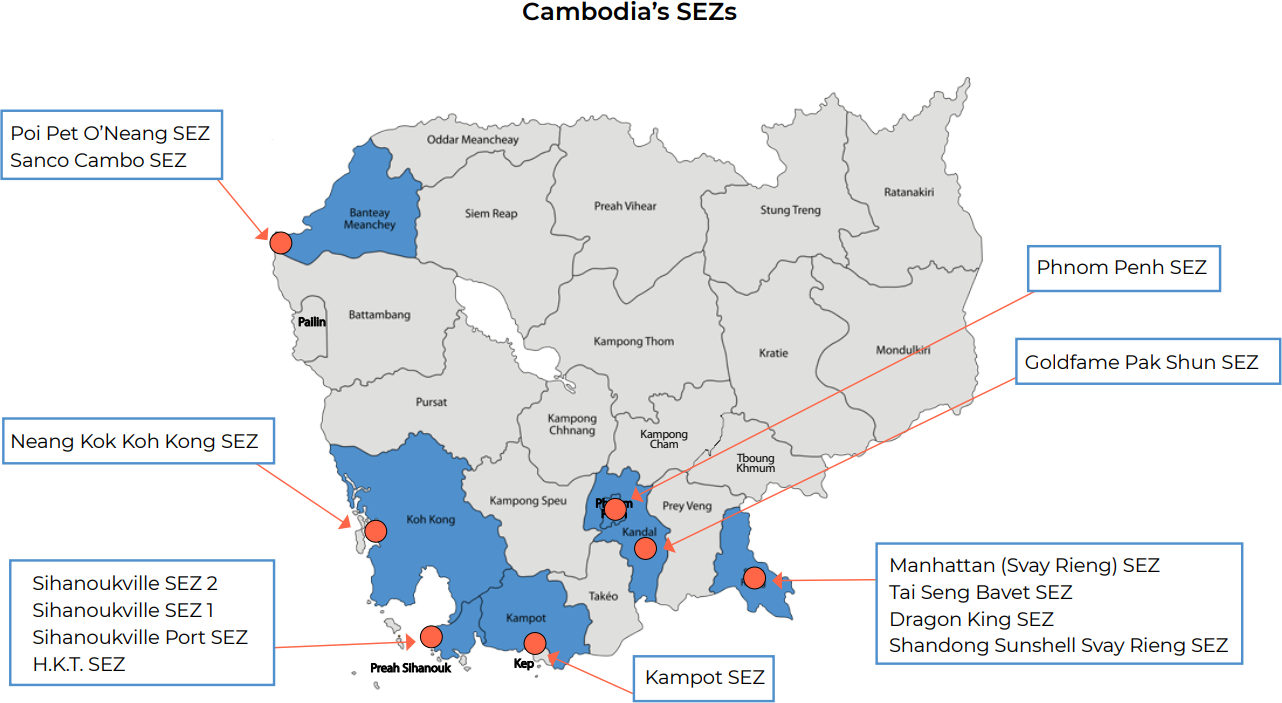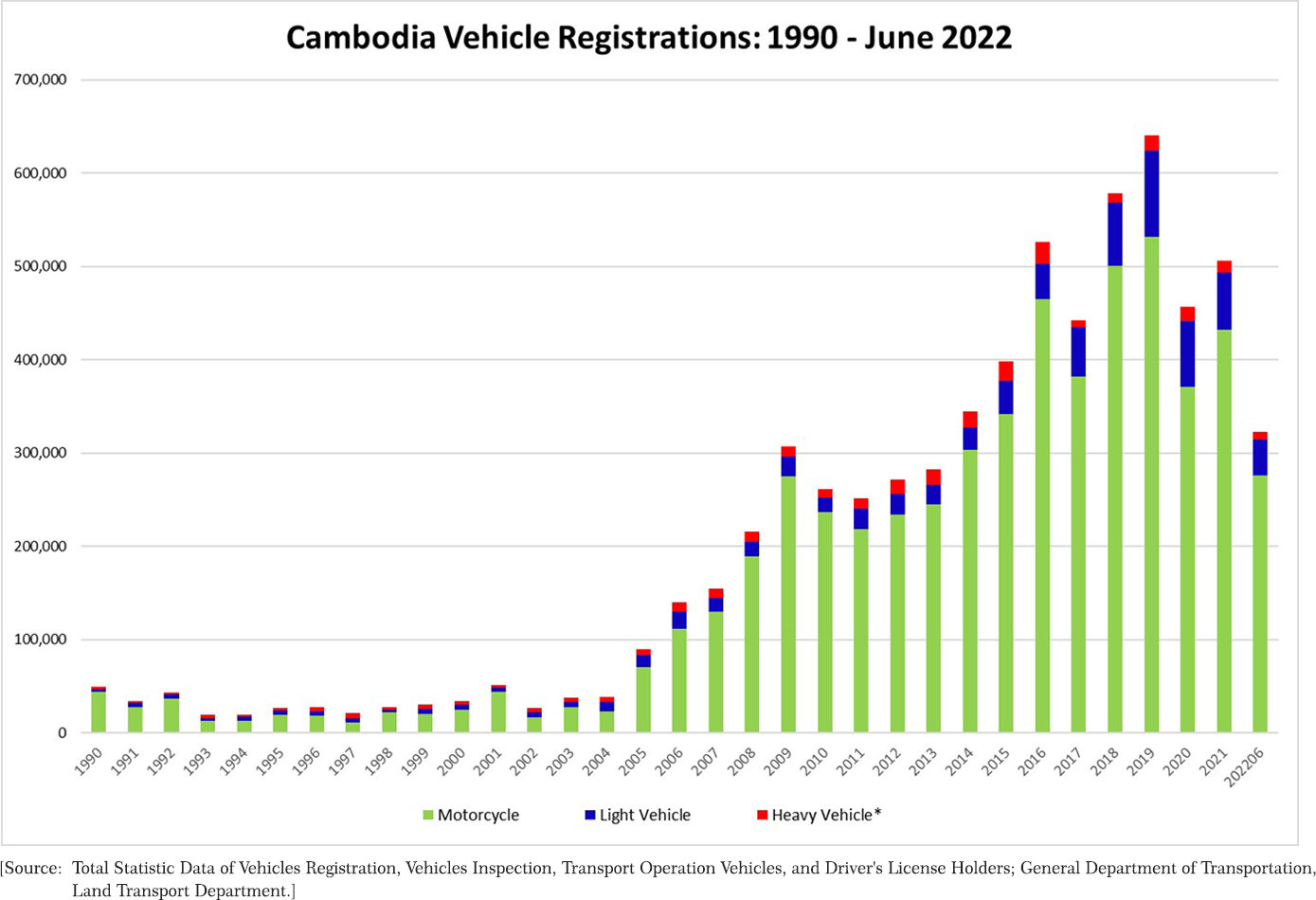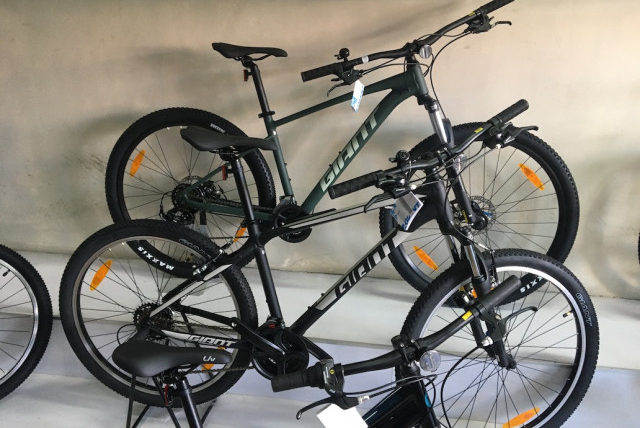Ever wondered why world-renowned brands like Toyota, Ford, Coca-Cola and France’s Lafarge have set up a factory and assembly plant in Cambodia? It might surprise you to learn that this Southeast Asian nation, famed for its majestic Angkor Wat temples, is also a rising economic star. Let us help you know more about the fascinating world of Cambodia’s economy, a story filled with ancient traditions, modern transformations, and exciting opportunities.
💡 We are a sourcing company located in Cambodia that connects international businesses with reliable Cambodian suppliers. Our network includes a wide range of manufacturers, wholesalers, and distributors across various product categories.
🎯 Tell us what you’re looking for! If you’d like to source products from Cambodia, simply send us the details of what you need, including your product specifications, minimum order quantity (MOQ), and any specific sourcing goals. Our local team will then get to work within a week to find the perfect Cambodian suppliers to meet your requirements.
Cambodia in brief
Cambodia, a Southeast Asian nation steeped in rich history and breathtaking temples, is also experiencing a remarkable economic transformation. Over the past two decades, the country has witnessed a boom, averaging a 7% annual GDP growth rate between 2010 and 2019. This surge is attributed to a combination of internal strengths and a strategic position in the global marketplace.
One key driver is Cambodia’s young and growing population. Cambodia has a young workforce due to several historical and demographic factors. The tragic events during the Khmer Rouge regime led to a significant loss of life, which was followed by a population surge as the country recovered. This resulted in a baby boom that has given Cambodia a large and growing youth population. Today, a significant portion of the Cambodian population is under the age of 30. The young workforce in Cambodia faces challenges such as the need for reskilling and upskilling to adapt to technological advancements and global economic changes.

Despite these challenges, the youthful population is seen as a key driver of economic development, and there is an urgent need to shape their opportunities. Moreover, the government, embracing free market principles, has actively courted foreign investors. Special incentives, like tax breaks for qualified projects, are attracting businesses to Cambodia’s shores.
Beyond its young workforce, Cambodia has a strategic location. Sharing borders with Thailand, Laos, and Vietnam, with the Gulf of Thailand to its southwest. This central position provides access to key world markets, making it an attractive low-cost manufacturing base for industries with significant demand for their products in other parts of the region4. Additionally, in the ASEAN context, Cambodia’s competitive labor costs, improving infrastructure, and strategic location combined with its growing economy make it a compelling choice for businesses looking to establish a foothold in Southeast Asia. Recent free trade agreements, like the China-Cambodia FTA and the Regional Comprehensive Economic Partnership, are expected to further connect Cambodia’s economy to the world.
This focus on trade is already paying off. Garment and footwear exports, a major industry in Cambodia, have skyrocketed. Between 2018 and 2019 alone, exports jumped by 17%, a testament to the country’s growing role in the global supply chain. Moreover, Cambodia’s lighting industry is also growing, with a focus on LED adoption, light manufacturing, and energy-efficient solutions. The country’s economic growth and strategic location contribute to its potential in this sector.
Cambodia’s economic rise isn’t just about numbers. As Khmer street food vendors dish up delicious noodle dishes and locals sip on refreshing green tea shakes, a sense of optimism fills the air. Tourists from around the world marvel at the architectural wonders of Angkor Wat, a symbol of Cambodia’s glorious past, while a new chapter unfolds – one of economic development and a bright future.
While Cambodia celebrates its economic success, challenges remain. But with a determined population, a strategic location, and a growing openness to the global market, Cambodia is poised to continue its remarkable journey.
Light Manufacturing in Cambodia
Cambodia’s economy is on the move, and it’s not just about those famous t-shirts anymore. While textiles and footwear remain king for now, a new wave of light manufacturing is gaining momentum. This shift is driven by a desire to diversify exports and move beyond low-cost clothing.
Have you ever wonder:
Where do the raw materials come from? From other countries like China? Or Cambodia is an assembly line or A-Z manufacturing country?
Cambodia likely sources a significant portion of its raw materials for light manufacturing, like metals, plastics, and electronics, from China, Thailand, Vietnam and Malaysia due to its proximity and established supply chains. However, some materials may be sourced locally or regionally.

What is the estimated price to manufacture lighting?
The price of manufacturing lighting in Cambodia can vary widely depending on the type of product such as indoor, outdoor lighting, accessories and the scale of production. For specific pricing, it would be best to contact local manufacturers directly as they can provide detailed quotations based on your requirements. Giz-Cambodia used to work with local Cambodia manufacturers, they will tell you their story and specific information in Cambodia if you reach them.
How are lighting components manufactured in Cambodia? How is it possible to make lighting that can be used indoors and outdoors?
- The journey of a light fixture starts with an idea, sparked by customer needs, market trends, or a creative designer. This idea is then brought to life through a prototype, allowing for testing and securing production funding.
- Next comes the detailed design stage, where engineers translate the idea into blueprints and choose the right materials. With a clear roadmap, the light is then engineered using specialized tools and machines.
- Once the individual parts are built, it’s assembly time! All the components like housing, lens, and bulb come together. Rigorous testing follows to ensure everything works flawlessly and meets safety standards.
- Finally, quality control takes center stage. Through various tests and inspections, manufacturers make sure each light is perfect before it reaches your home.
Major companies manufacturing lighting in Cambodia
Companies like Shiningmoon Lighting (Cambodia) Co., Ltd. are equipped with advanced production equipment and technologies such as die-casting, powder coating, assembly, and SMT (Surface-Mount Technology), enabling them to produce high-quality LED lighting products efficiently and cost-effectively.
A nationwide project assessed the market and supported the creation of a national LED replacement program. This involved evaluating available lighting products, institutional frameworks for financing schemes, financial mechanisms, and readiness for energy-saving standards and labeling programs. The project also prepared a request for funding from the Green Climate Fund.
This sector offers sustainable growth opportunities by focusing on assembling parts sourced internationally. Electronics, auto parts, and bicycle manufacturing are emerging clusters within light manufacturing, taking advantage of Cambodia’s competitive labor costs compared to other regional countries. In 2017, this sub-sector employed around 37,000 workers.

Imagine factories humming with activity, assembling electronics, auto parts, and even bicycles. That’s the future Cambodia is building, leveraging its young workforce and strategic location. Some companies like Philips Lighting, Procter and Gamble, Perfetti Van Melle, Fonterra, Philips Lighting, Hager, Castrol, Ricoh, Pilot, Staedtler and Asia Pulp and Paper and Japanese companies are leading the charge, setting up shops in Special Economic Zones (SEZs) to be close to the action in Thailand and Vietnam. They see Cambodia as the next big player in the regional supply chain, a “China Plus One” option for manufacturers looking to spread their bets.
The Lamps & Lighting market in Cambodia generated US$11.21 million in revenue in 2024, with a projected annual growth rate of 4.89% by 2029 (Statista). While smaller compared to larger economies, this growth reflects Cambodia’s increasing interest in energy-efficient lighting solutions. Additionally, smart lighting projects utilizing advanced technology have been implemented to save energy expenses and promote sustainability.
A Chinese company named FONDA Technologies, a pioneer in NB-IoT smart lighting control platforms in China, entered the Cambodian market in March 2017. They partnered with the Cambodian government on a project to reduce energy consumption and CO2 emissions. This project aimed to be a model for Siem Reap and other Cambodian cities. FONDA Technologies’ involvement also established them as a leader for Chinese companies seeking overseas expansion.
The project brought advanced lighting technology to Cambodia, leading to significant energy cost savings. Additionally, FONDA’s SCCS system helped establish an Internet of Things (IoT) platform in the country. It’s important to acknowledge that security vulnerabilities are a known concern with IoT, and the industry is actively working on solutions.
European investors are also taking notice, attracted by Cambodia’s openness and the growing support network of European business groups. There’s a real sense of community brewing, making it easier for newcomers to navigate the business landscape.
But hold on, this light manufacturing revolution is still in its early stages. Compared to the textile giants, it’s a baby. However, the potential is undeniable. The Cambodian government is all in, partnering with international donors to develop a skilled workforce and embrace cutting-edge technology (think “Industry 4.0”).
There are challenges, of course. One major hurdle is the lack of specialized skills among Cambodian workers. But the government is tackling this head-on, setting up training programs and leveraging expertise from countries like Japan.
And there’s a silver lining for European companies. Even with the partial withdrawal of trade preferences with the EU, light manufactured goods like bicycles still enjoy duty-free access. In fact, bicycle producers even get a tax break on exports to Europe!
So, what does this mean for the future?
Cambodia is transforming from a garment industry giant into a well-rounded manufacturing player. This shift promises exciting opportunities for investors, creates new jobs for Cambodians, and paves the way for a more sustainable and prosperous future. It’s a story worth watching!
Light manufacturing in Cambodia is on the rise as the country seeks to diversify its exports beyond garments and footwear, aiming for higher-value manufacturing that offers more sustainable growth opportunities. This includes new clusters of electronics, auto parts, and bicycle manufacturing, focusing on the assembly of internationally-sourced parts:
Automotive Industry
Data from 1990 onwards shows a significant increase in Cambodia’s vehicle ownership. On average, the number of all vehicles has grown by 16.7% annually. This growth is even more pronounced for light-duty vehicles, averaging 31.3% per year. In recent years, the introduction of ASEAN-built models has contributed to a positive trend, with newer vehicle[s (those within the last three model years) now accounting for roughly one-third of all registered light and heavy-duty vehicles (excluding motorcycles).

In recent years, brand new factories making car parts have popped up, especially near the border with Thailand. These plants are like a tag team: they combine Cambodia’s talented workforce with Thailand’s readily available electricity. This winning combo allows them to focus on parts that require a lot of hands-on work, like engine radiators. These parts then get shipped off to bigger factories in Thailand and other countries where they’re put together into finished cars.
It’s not just Japanese companies joining the ride. Big names like Toyota (they even opened their first factory here in 2016!) are investing heavily, and American giant Ford jumped in with an assembly plant in 2017. There’s even talk of Cambodia becoming a leader in eco-friendly car parts with the announcement of the first recycled auto parts factory by Samyo Part.

The numbers tell the story too. Cambodia’s exports of car parts are on the rise, jumping almost 20% from 2018 to 2019. While the total value might not be huge yet (around $15.8 million in 2019), nearby Thailand is a big customer, along with countries like the Netherlands and the USA. It looks like Cambodia’s auto industry is putting its foot on the gas and heading for an exciting future!
Electronics / Electrics
The electronics sector, which includes lighting products, has been earmarked as a priority sector for Cambodia to develop. The lighting industry, as part of the electronics sector, benefits from the same factors that make the automotive industry attractive in Cambodia: competitive labor costs, strategic location, and a young workforce. Both industries are seen as having strong growth potential and are well-placed to capture opportunities from supply chain shifts.
Major importers bring in a diverse selection of electronics, from IT equipment and devices to home appliances. These importers often partner with established brands like Dell, Lenovo, Sony, and Fuji Xerox, ensuring a reliable selection.

Since 2011, new factories have churned out electronics like wires, lights, and even computer parts have been popping up. This is largely thanks to Japanese companies like MinebeaMitsumi, a big name in electronics, which has invested a whopping 250 million USD! They’re not alone – Yazaki Corp and Sumitronics Manufacturing are also part of the party. As of 2017, this industry employed a sizable workforce of around 37,000 people. The best part? Exports are on the rise too, reaching 583 million USD in 2019 (up 14% from the previous year). Their top customers? Thailand, Japan, and China. Looks like Cambodia’s electronics industry is plugged in for success!
For those seeking online convenience, Cambodia offers online electronics stores. These platforms allow customers to browse and purchase a variety of electronics, including computers, mobile phones, and even home appliances. Additionally, international e-commerce platforms like Ubuy cater to Cambodian consumers by offering a vast selection of electronics, including the latest gadgets and accessories. This includes smartphones, laptops, cameras, audio equipment, gaming products, allowing customers the flexibility of international choice with delivery directly to Cambodia.
Bicycles Manufacturing
In the first five months of 2020 alone, Cambodia’s bicycle exports surged by 26%, with a substantial number of units shipped to the European Union, making it the biggest bicycle supplier to those countries.

This success in the bicycle industry has created opportunities for the development of related industries, including the manufacturing of bicycle parts and potentially, lighting components for bicycles. As the volume of bicycle production grows, it becomes more feasible for manufacturers to consider local production of related components, which could include lighting systems for bicycles.
Moreover, the light manufacturing sector in Cambodia, which encompasses both bicycle and lighting industries, is emerging with a focus on the assembly of internationally-sourced parts. This sector takes advantage of Cambodia’s competitive labor costs and strategic location, which are also beneficial for the lighting industry. The growth in bicycle manufacturing could lead to increased demand for locally produced lighting components, which would be used in bicycle production, thus creating a synergy between the two industries.
Big names from Taiwan like A&J Cambodia and Xds Bicycle are leading the way, and even American giant Kent International is joining the peloton! This booming industry is creating tons of jobs (although the exact number is a mystery). Cambodia isn’t just producing bikes, they’re exporting them all over the world – especially to Europe. In fact, they overtook Taiwan as the top supplier of bicycles to the EU in 2017! Exports reached $413 million in 2019, and with Germany, Belgium, and the UK as their top customers, it looks like Europe loves Cambodian bikes!
Lastly…
Cambodia’s potential as a sourcing destination is undeniable. However, navigating a new market can be challenging. Cultural differences, complex regulations, and logistical hurdles can consume valuable time, money, and human resources. This is where Giz-Cambodia steps in as your trusted partner on the path to successful Cambodian sourcing.
Giz-Cambodia is a one-stop shop for businesses seeking to establish a seamless supply chain in Cambodia. Their team of experts boasts extensive experience and deep local knowledge, ensuring a smooth and efficient sourcing experience. You want to explore big names’ sourcing journeys in Cambodia like Toyota and Ford, you might need Giz-Cambodia ‘s help!
Feeling overwhelmed by the idea of sourcing from Cambodia? Giz-Cambodia has your back! They’ve built strong relationships with Cambodian suppliers and can connect you with the perfect fit for your needs. Their team of experts will guide you through the entire process, from navigating regulations to ensuring top-quality products. They’ll even handle the tricky negotiations and logistics, so you can focus on running your business.
Imagine this: you don’t have to worry about language barriers or deciphering complex Cambodian rules. Giz-Cambodia acts as your cultural translator, ensuring smooth communication and building trust with your Cambodian partners. They’ll even be your eyes and ears on the ground, inspecting factories to make sure everything runs smoothly. With Giz-Cambodia, sourcing from Cambodia becomes a breeze.
Cambodia’s future as a light manufacturing hub is bright. So, what are you waiting for? Explore the possibilities that Cambodia offers and embark on a journey of growth alongside this rising economic star!
